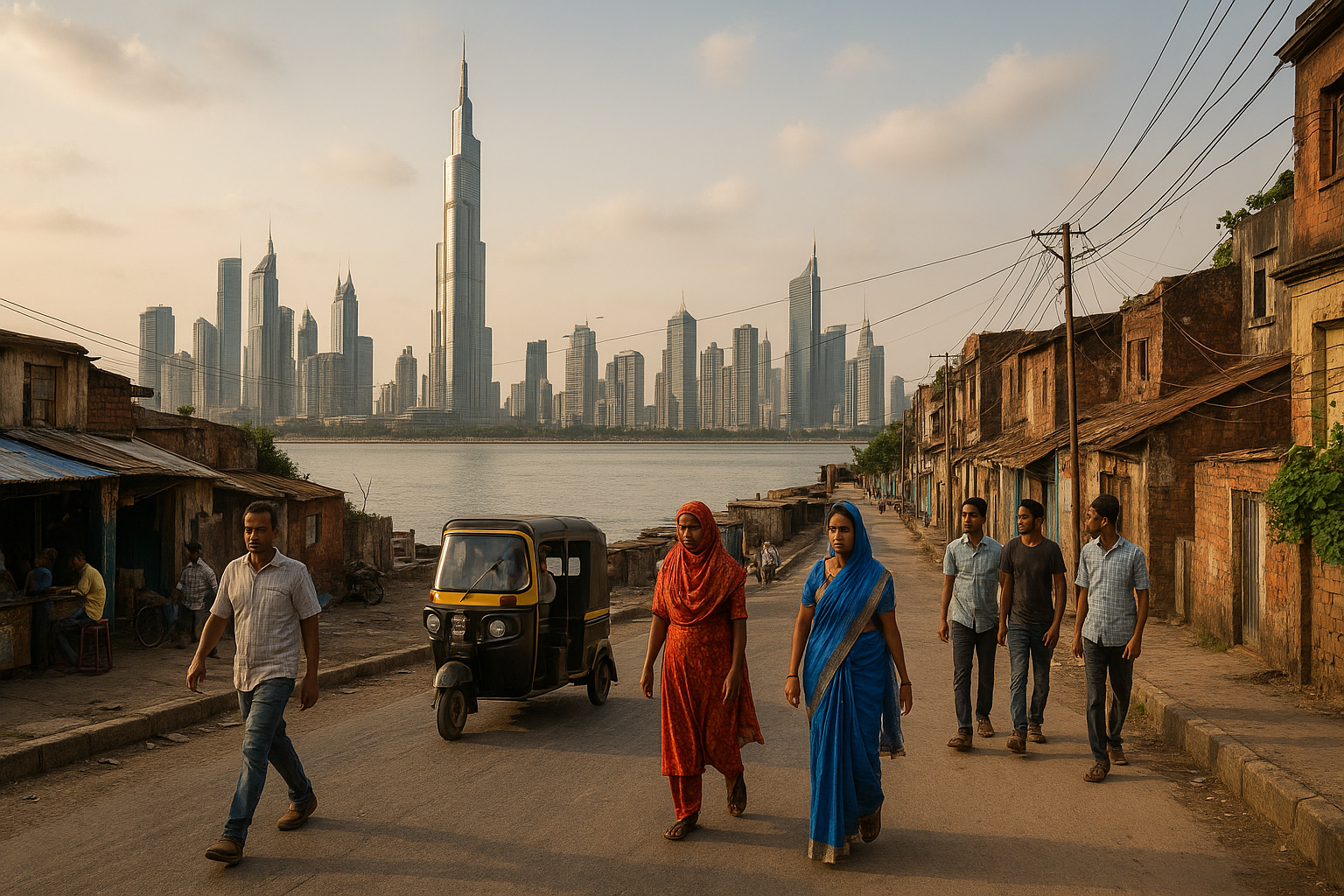The Great Slowdown: How Emerging Economies Are Navigating a Changing Global Order
Emerging markets and developing economies (EMDEs) surged in the early 21st century through globalization and reform but now face slowing growth, rising debt, and climate challenges. To regain momentum, they must revitalize structural reforms, deepen trade ties, and build macroeconomic resilience.

The early twenty-first century ushered in an extraordinary transformation for emerging market and developing economies (EMDEs), driven by an unprecedented wave of globalization. According to a comprehensive study by the World Bank’s Development Economics Prospects Group, EMDEs surged ahead by integrating into global trade and financial systems, undertaking structural reforms, and embracing liberalization. Institutions such as the World Bank, IMF, WTO, and affiliated research bodies tracked this transformation, noting that EMDEs increased their share of global GDP from 25 percent in 2000 to nearly 45 percent by 2024. Central to this shift were the EM3, China, India, and Brazil, whose collective output quadrupled over two decades. China, for instance, grew into the world’s largest metals consumer, while Brazil solidified its role as a top agricultural exporter. Trade among EMDEs also expanded significantly, with nearly half of their exports directed to fellow developing countries. Financial integration grew deeper: EMDEs received 21 percent of global capital inflows from 2019 to 2023, up from just 6 percent at the century’s start. At the same time, EMDEs became important remittance hubs and rising sources of foreign aid.
Synchronization and Spillovers in an Interconnected World
As trade and financial ties expanded, business cycles among EMDEs became increasingly synchronized. What had previously been a loosely connected group of national economies began to move in tandem. The emergence of a distinct EMDE-wide business cycle reflected deeper cross-border linkages, not only among developing economies but also with advanced markets. The study revealed that during the 2010s, a shared EMDE-specific economic factor explained a quarter of business cycle fluctuations, more than double its contribution in the 2000s. The influence of China, India, and Brazil as growth transmitters also rose. A one-percentage-point growth shock in the EM3 resulted in a 1.9 percent output increase in other EMDEs after three years. Yet the advanced economies, the AE3 comprising the United States, the euro area, and Japan, continued to dominate in global spillovers. The same one-point growth shock from the AE3 triggered a 4 percent increase in EMDE output and 3 percent globally. When compared individually, China’s global influence is still surpassed by that of the U.S., although the gap has narrowed significantly.
A Shift in the Winds: Slowing Growth and Rising Vulnerabilities
The story of EMDEs in recent years has been marked by a sobering deceleration. Between 2020 and 2024, their average annual growth dropped to just 3.5 percent, down from nearly 6 percent in the 2000s. Per capita growth convergence with advanced economies has slowed dramatically, and nearly half of EMDEs are now trailing their developed counterparts. Long-term growth forecasts have also dimmed. In 2010, EMDEs were projected to grow at 6.2 percent in the following decade. By 2024, that projection had fallen to 3.4 percent. Contributing factors include declining investment, weakening productivity, and unfavorable demographic trends, particularly aging populations in East Asia and Central Asia. Even in India and Brazil, growth has cooled significantly. Meanwhile, the benefits of past productivity gains from labor reallocation, from agriculture to industry, are fading. Climate-related shocks, from droughts to floods, have also become more frequent and costly, threatening to plunge over 130 million people into extreme poverty by 2030.
Global Fragmentation and Domestic Stagnation
Compounding the economic slowdown is a rise in global trade protectionism and geopolitical fragmentation. Trade integration, once a key engine of EMDE development, has lost momentum. New trade and investment agreements have dwindled. The number of global trade restrictions hit a record high in 2023. Foreign direct investment to EMDEs fell as a share of GDP, and global value chains have stagnated since the early 2010s. Domestic policy reform has also stalled. Structural and institutional reforms that once underpinned investment confidence have weakened. Many EMDEs have seen a deterioration in governance quality, reduced policy certainty, and stalled digital transformation efforts. Debt levels have soared, with EMDE public debt reaching 70 percent of GDP in 2024. Fiscal deficits widened, while government revenue gains have not kept pace with spending. Amid elevated global interest rates, debt-servicing costs have become a heavy burden for many EMDEs. At the same time, weak financial sectors and underdeveloped capital markets limit resilience and constrain growth prospects.
A Call for Renewal: Reform, Resilience, and Strategic Engagement
The report issues a clear call to action: EMDEs must reinvigorate their reform agendas to overcome this new wave of economic headwinds. Restoring investment growth is paramount, particularly in infrastructure, education, and climate resilience. Human capital development must be prioritized to prepare workforces for a rapidly digitizing global economy. Improving the business climate, enhancing competition policy, and encouraging innovation are crucial for reigniting productivity. EMDEs must also rethink their external strategy. This includes forging regional and interregional trade agreements, improving trade efficiency, and leveraging digital services trade. While cautious use of industrial policy can help drive development in strategic sectors, such policies must be transparent, time-bound, and WTO-consistent. At the same time, fiscal and monetary frameworks need strengthening to rebuild credibility and create policy space for future shocks. Enhanced macroeconomic buffers, deeper financial systems, and coordinated global engagement, especially through multilateral institutions, are critical. Ultimately, by seizing this moment for bold reform and strategic adaptation, EMDEs can reclaim their trajectory and secure a more inclusive and resilient future.
- READ MORE ON:
- emerging market and developing economies
- EMDEs
- World Bank
- IMF
- WTO
- FIRST PUBLISHED IN:
- Devdiscourse










